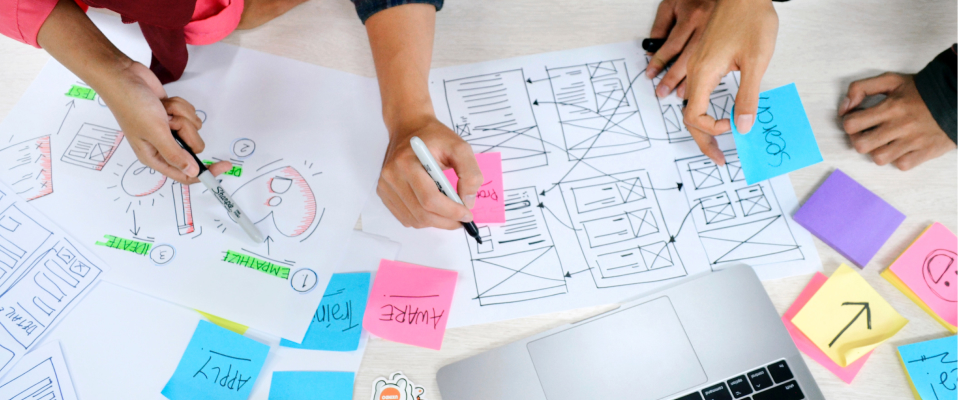
Accelerating Businesses With Design Thinking
Organisations have tremendous difficulties in remaining competitive, adjusting to change, and satisfying customers' constantly changing expectations in today's quickly changing business environment.
Many companies are using design thinking, a human-centered strategy that prioritizes empathy, creativity, and collaboration, to address these challenging issues and spur innovation.
In this article, we will look at design thinking's advantages for businesses and how it can change how companies operate in the digital era.
Client-Centered Innovation
Design thinking places a strong emphasis on comprehending and empathizing with clients, which is one of its main benefits. Businesses may develop goods, services, and experiences that actually resonate with their target audience by acquiring deep insights into their wants, desires, and pain areas. Organizations are encouraged to put themselves in the position of their consumers by implementing design thinking process, which enable them to identify unmet requirements and create solutions that effectively answer them. With a focus on the needs of the consumer, there is less chance of developing goods or services that do not find a market, which eventually results in greater client pleasure and loyalty.
Improved Creativity and Problem-Solving
A change in perspective when it comes to problem-solving is encouraged by design thinking. Design thinking adopts a more iterative and exploratory methodology rather than the conventional linear way of thinking. It promotes creativity and makes it possible for firms to come up with novel ideas by encouraging them to investigate a wide range of viable solutions. Design thinking assists organisations in breaking free from the constraints of conventional thinking and exploring new possibilities by promoting ideation, prototyping, and testing. Teams are given the tools they need to question presumptions, push limits, and find innovative solutions to challenging issues using this method.
Teams that Collaborate and Are Multidisciplinary
Interdisciplinary teams and collaboration are essential to design thinking's success. To collaboratively address problems, it brings together people with various experiences, skill sets, and viewpoints. A properly crafted design thinking methodology dismantles silos and promotes the sharing of information by encouraging cross-functional collaboration. This collaborative setting encourages innovation and makes it easier to combine various specialties, leading to more comprehensive and well-rounded solutions. Design thinking makes sure that all parts of a problem are taken into consideration by integrating stakeholders from multiple departments, producing more thorough and significant results.
Engaging Employees with Power
Enterprise design thinking encourages an innovative culture and gives people the freedom to share their knowledge and ideas. Organizations can use their workforce's collective intelligence by incorporating employees at all levels in the problem-solving process. This inclusive strategy not only produces better results but also improves employee happiness, engagement, and morale. Employees are more motivated and dedicated to bringing about positive change inside the company when they feel that their opinions are appreciated and that they are free to experiment and take risks.
Conclusion
Businesses may negotiate the difficulties of a quickly shifting business environment with the help of design thinking, which offers a transformative approach. Organisations may seize new possibilities, promote customer-centric innovation, and establish a culture of continuous improvement by embracing empathy, creativity, cooperation, and iterative problem-solving. Design thinking offers a potent framework for reimagining goods, services, and customer experiences in an era where disruption is the new standard of living. Organisations can position themselves as leaders in their industries by adopting design thinking principles into their business practises.
